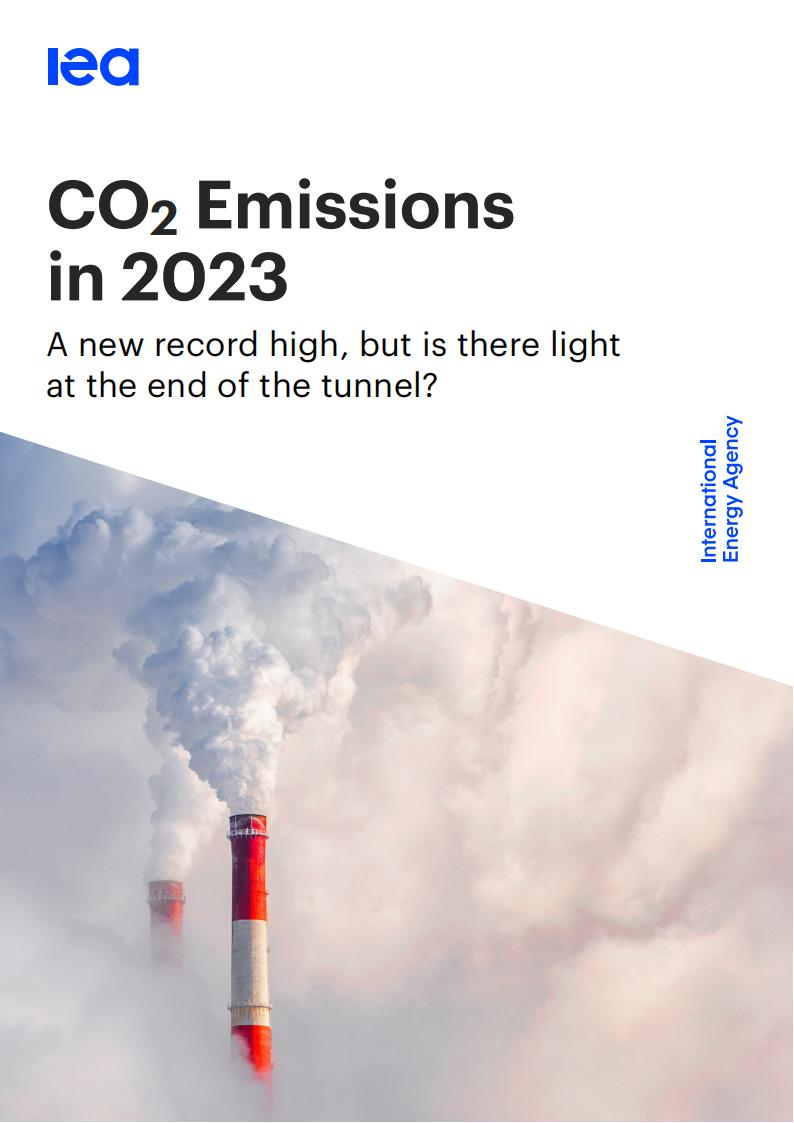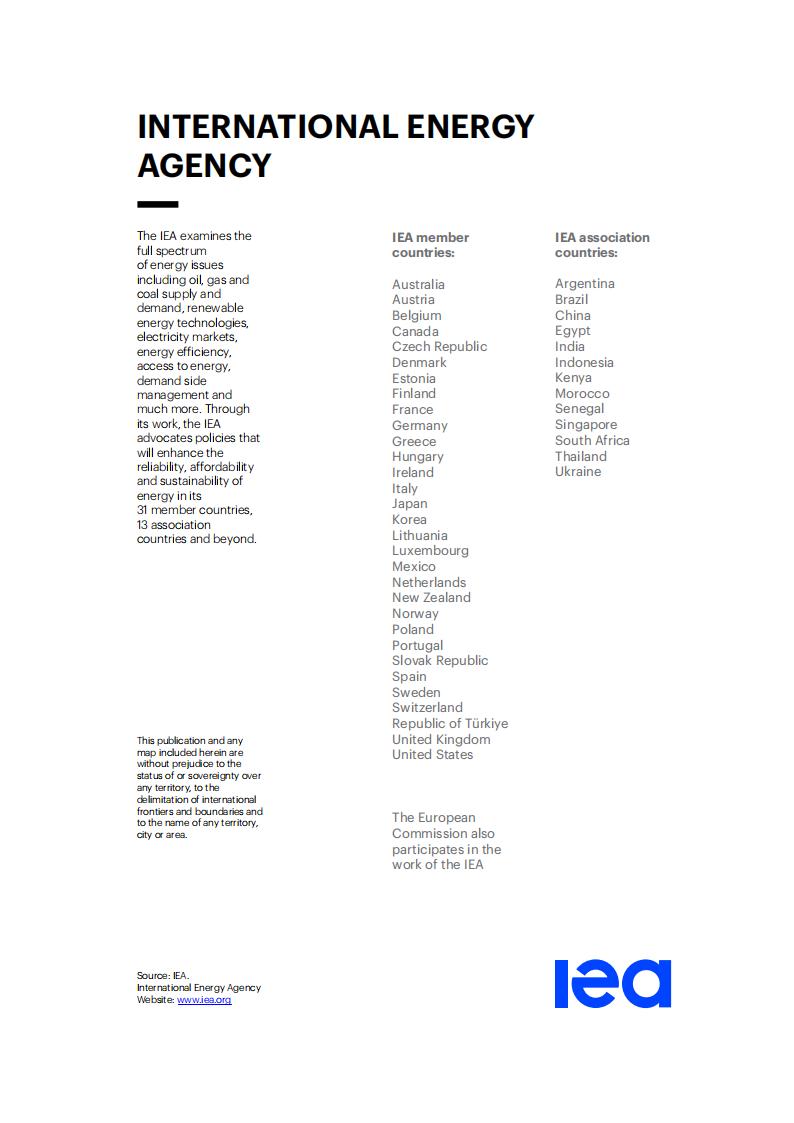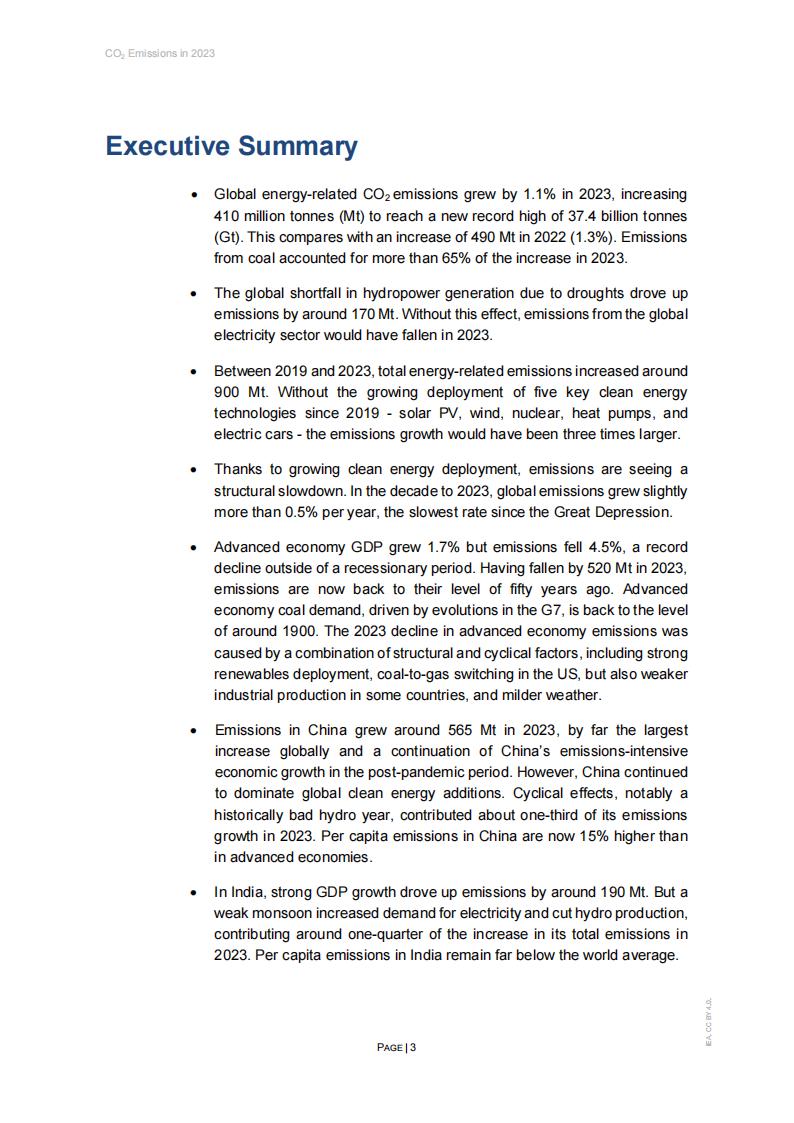Global energy-related COz emissions grew by 1.1%in 2023,increasing410 million tonnes (Mt)to reach a new record high of 37.4 billion tonnes(Gt).This compares with an increase of 490 Mt in 2022(1.3%).Emissionsfrom coal accounted for more than 65%of the increase in 2023.
The global shortfall in hydropower generation due to droughts drove upemissions by around 170 Mt.Without this effect,emissions from the globalelectricity sector would have fallen in 2023.
Between 2019 and 2023,total energy-related emissions increased around900 Mt.Without the growing deployment of five key clean energytechnologies since 2019 -solar PV,wind,nuclear,heat pumps,andelectric cars -the emissions growth would have been three times larger.
Thanks to growing clean energy deployment,emissions are seeing astructural slowdown.In the decade to 2023,global emissions grew slightlymore than 0.5%per year,the slowest rate since the Great Depression.
Advanced economy GDP grew 1.7%but emissions fell 4.5%,a recorddecline outside of a recessionary period.Having fallen by 520 Mt in 2023,emissions are now back to their level of fifty years ago.Advancedeconomy coal demand,driven by evolutions in the G7,is back to the levelof around 1900.The 2023 decline in advanced economy emissions wascaused by a combination of structural and cyclical factors,including strongrenewables deployment,coal-to-gas switching in the US,but also weakerindustrial production in some countries,and milder weather.
Emissions in China grew around 565 Mt in 2023,by far the largestincrease globally and a continuation of China’s emissions-intensiveeconomic growth in the post-pandemic period.However,China continuedto dominate global clean energy additions.Cyclical effects,notably ahistorically bad hydro year,contributed about one-third of its emissionsgrowth in 2023.Per capita emissions in China are now 15%higher thanin advanced economies.
In India,strong GDP growth drove up emissions by around 190 Mt.But aweak monsoon increased demand for electricity and cut hydro production,contributing around one-quarter of the increase in its total emissions in
2023.Per capita emissions in India remain far below the world average.



本文来自知之小站
报告已上传知识星球,微信扫码加入立享4万+深度报告下载及1年更新。3天内不满意退出星球款项原路退回,欢迎试用。到期续费仅需5折
(如无法加入或其他事宜可联系zzxz_88@163.com)
